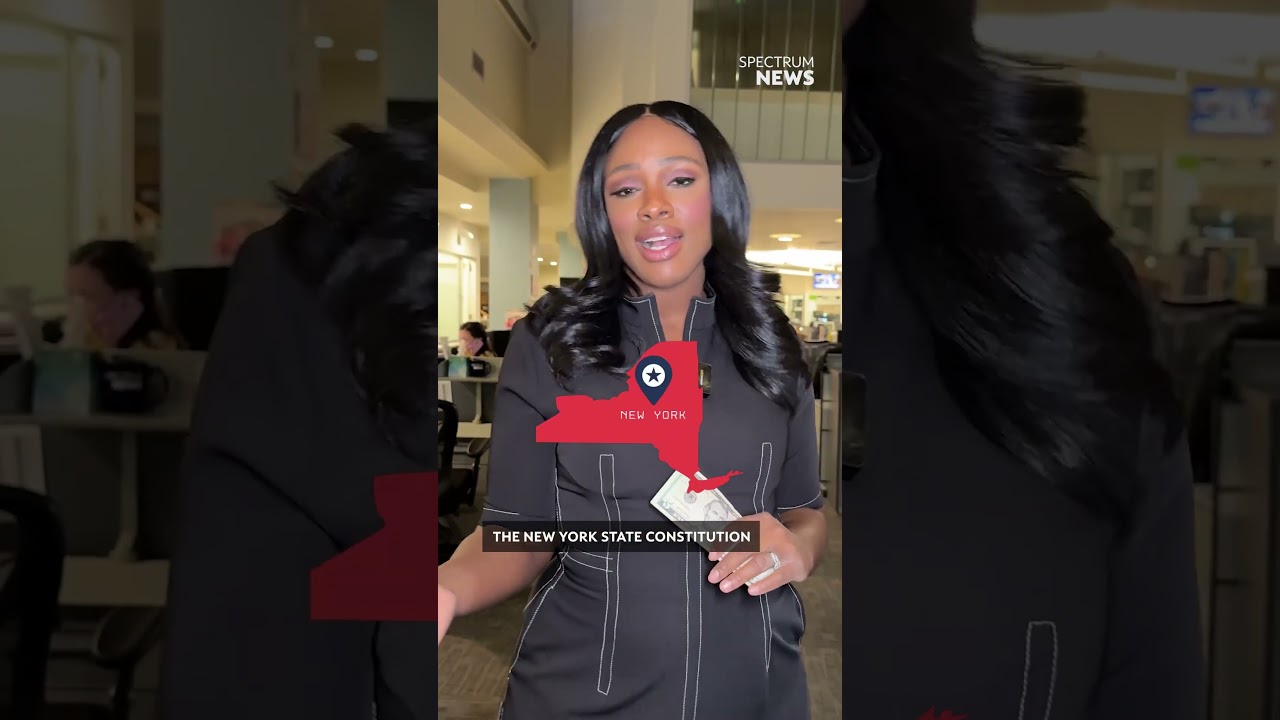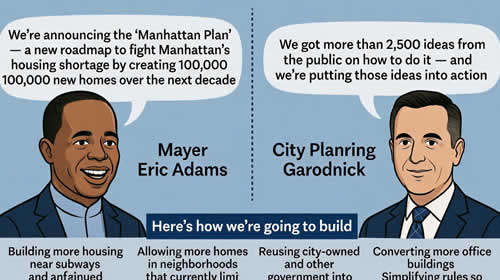In a live radio interview on WBAI’s What’s Going On!, Mayor Eric Adams spoke about New York City’s efforts to reduce gun violence and support young people. He shared that shootings in the city have dropped to the lowest levels in recorded history, thanks to both strong policing and prevention programs. These include over 100,000 summer jobs, 11,000 paid internships, and new support for young people in foster care and public housing. Mayor Adams also talked about the national work being done by the African American Mayors Association to fight violence in Black and brown communities. He addressed concerns about students not returning to school after the pandemic and said the city is working hard to bring them back. He also called for more federal help to deal with the lasting effects of the migrant crisis and to better support local communities.
Mayor Adams Calls In for Live Interview on WBAI’s “What’s Going On!”
Isaac Ferguson: Good morning, Mayor Adams. Welcome to WBAI.
Mayor Eric Adams: Hey, how’s it going? Great to be on with you.
Ferguson: It’s been some time since we’ve talked, mayor. It’s my pleasure.
Mayor Adams: Thank you for allowing me to come on and chat with you.
Ferguson: Mayor Adams, you go straight to the point. I know you’re having a crazy busy morning. I know you’re part of a national organization of Black mayors. I believe you still are very much involved in that.
Mayor Adams: Yes, it’s called AAMA, African American Mayors Association.
Ferguson: Yes, and I believe that one of the main objectives of that organization is to deal with the matter of gun violence in Black and brown communities. Am I right?
Mayor Adams: Yes, it is.
Ferguson: Can you tell us some of the developments, what’s going on with that organization, what’s their current platforms, and have they been able to make any progress?
Mayor Adams: Yes, they have. When you look at the major cities across the country, you are seeing these Black mayors really bringing down shootings and homicides. Right here in New York, in the first seven months of this year, we saw the lowest number of shootings and people who are victims of shootings drop to the lowest number in recorded history.
But not only that, our upstream solutions, when you look at these different cities, it’s not just about law enforcement, but it’s also about how you do upstream. Instead of waiting for a young person to fall into the river of violence and pull them out downstream, we went upstream.
What we’re doing with paid internships, 11,000 in the DOE, our Summer Youth Employment [Program], over 100,000. And what we’re doing with formerly justice-involved young people through our CRED program, teaching them trades and skills. So, the goal is not only to grab a young person when they commit a crime, but how do you prevent the crime from taking place in the first place. And that’s that proactive and reactive approach that you’re seeing across the country with these Black mayors.
Ferguson: Yes, mayor. But I’m here talking with young people, and gun violence has become a serious problem of the young, and especially young males. And what we’re seeing is that before the pandemic, our chronic school absenteeism stood at around 15 percent across the country. Now, it’s up over 30 percent. So, the young people are not returning to school. We told them to stay out of school because of the crisis of the pandemic, and probably people took it for granted that after the pandemic was over, they’ll return.
Now, many, many of those young males are in the streets. They’re not in school. And they’re getting into gangs. They’re forming their own families based on, call it machoism, to use an old term, and teen violence. What is being done to get these young people back into schools or get them into some situation where they can be influenced away from gangs and gang violence?
Mayor Adams: And that is so true, as you talked about it. The chronically absent children after COVID, this is the byproduct of COVID. As you indicated, many young people did not come to school because we told them during COVID to stay home. And that continued.
And in the Department of Education, we are focusing on those chronically absent young people, communicating with their family members and loved ones, finding out those who are not returning to school, coaching them to come back into school. And you’re really seeing a problem in the area of those children who are unhoused, at the shelter, or living with a family member because of a housing issue. That is the long-term impact that we are facing when it comes down to some of the violence we’re seeing.
You know, it goes back to what I shared with many New Yorkers, the impact of the $7.2 billion we lost during the migrant and asylum seeker [crisis]. Those dollars, I should say, those dollars could have gone to things like targeting our chronically absent children. We could have easily spent that half a billion dollars on just focusing on that. And when I talk about the impact of the money we lost because the federal government did not pick up the price tag, these are the things that I’m talking about.
But we are focusing on those chronically absent children to get them back into school because if you don’t educate, you will incarcerate. And that is what we’re seeing across this entire country.
Ferguson: Mayor Adams, we have many, many callers on the line. I know we can only take a few. And it’s so vital to hear from our listeners. So, we’re going to try to get one caller right now. Many people want to ask you questions and talk to you. And callers, please, stick to the matter of gun violence. I want to get the mayor’s opinion on this out to the public. And I want you to address his concerns and the activities he’s involved in with that.
First caller. Caller, you’re on the line. This is WBAI. You’re on the line with Mayor Adams, with Isaac Ferguson, and with Terri Wisdom. What’s your name, where you’re calling from, and what you got for us?
[Crosstalk.]
Ferguson: Let’s go on. Terri, you had some questions for the mayor concerning the claims that gun violence is down across New York City.
Terri Wisdom: Yes. Thank you. And good morning, Mayor Eric Adams. Welcome. We’re honored to have you here. Thank you. Extremely important to hear from you and your voice—
[Crosstalk.]
Wisdom: So, Mayor Adams, one of the things that we are hearing continually is gun violence is down. Gun violence is down across the city. And as we’re hearing that every day, we’re hearing about somebody being shot in the street, whether it’s a grandmother on a walker. And it’s mainly in our Black and brown communities. We know that there are disparities.
So, the question is, what are we doing about this systemic problem? How are we addressing it? And if, in fact, this is true, it’s overall down across the city. But in our areas, it appears to be down some. But down, you know, down less than, let’s say, in Staten Island, you know, it’s down a lot. But in Harlem or in Manhattan, it’s not.
So, what are we really doing? What are you doing to just address this matter? Because when people hear gun violence, the numbers are down, but they’re hearing about people getting shot, you know, what are we doing? And you’ve addressed some of it, but specifically, if you could address what is being done.
Mayor Adams: First, I think it’s important to know what’s the history of the overproliferation of guns. They have historically been in underserved communities, as we’ve stated. Black and brown communities, for the most part. This has been the history.
When you look at violence in Brownsville, Harlem, South Bronx, many of our young people pick up these guns because they were not receiving the real services to ensure they could not deal with gang violence and gun violence. When you think about gun violence, almost 50 percent is dealing with some form of association or attachment to gangs.
This has been a history, long, not in the last three years to four years, but even when I was a child. And so, we knew we had to zero in on what are the feeders to this violence. What causes a young person to get involved in this violence? And who are they? And that was my focus when I came into office.
A lot of them are foster care children. And we were watching our foster care children age out at 18, six to 700 a year were aging out and slipping through the cracks. So, what do we do? We’re paying their college tuition and giving them life coaches after they’re 21 years old and giving them a stipend so that they could go on with their lives and get the support that they need as any child would do.
And we knew that violence like gun violence happens after the school hours. So, what are we doing? We’re doing universal after school programs so our young people can have a place to go and participate in some form of development of their full personhood. And we also knew that many of our young people are dealing with financial restraints. And so that’s why we have paid internships, 11,000 to be exact.
And then we looked at places like NYCHA. Our public housing has always been a location where violence occurs at a large number, particularly gun violence. And for the first time, you’re seeing a substantial decrease in crime in NYCHA. And we targeted our NYCHA young people with our Summer Youth Employment [Program]. We had jobs that were allocated just for them so we could bring them into employment and give them the support they need.
And during summer months, as you saw historically, gun violence goes up over the summer months. And what we did for so many years, they were called by advocates to have a larger number of summer jobs. We, for the first time, had over 100,000 summer jobs and had our young people in school all year round. Over 110,000 young people were able to be in school all year round where they were able to get the support they needed during the summer months.
And as I stated, we also were proactive, I would say reactive, in that we removed 23,000 illegal guns off our streets, close to 24,000 actually. And we targeted those areas where we knew there was gun proliferation for the many years that we were conscious of.
And yes, it is down. And so, when you hear a high-profile shooting, it strikes your conscience and you begin to believe that these shootings are out of control. But in fact, the numbers don’t lie. We have the lowest number of shootings and victims of shootings in the recorded history of the city. The lowest number. And because we targeted those hot spots where the gangs were located.
Ferguson: Mayor, I believe we may be able to grab one caller. Caller, you’re on the line. What do you have for the mayor? People have been trying to get to you.
Question: Hi, Mayor Adams. My name is Gwen. I live in East Harlem. We met a long time ago. I wanted to put the spotlight on another part of this equation. And I think that this is, you know, this is not just a problem for New York City. This is a national problem. And one of the things we never discuss is the correlation between the legal drugs that we give children in school and gun violence.
And there are several studies, one of them Dr. Peter Breggin had spoken about, in the correlation between children that have been taking these drugs and gun violence. And actually, every single one of the kids that was involved in the mass shootings were children that had been taking legal drugs in school. They were taking Ritalin. They were taking Prozac. And now, if you read the bottles of these medicines, it tells you right there, at least on Prozac it does, that there’s a homicidal effect.
Now, it seems to me that we’ve done more to guard these, you know, drug companies than we have our own children. And I know you know this. I ran for City Council in New York City, that there are children, for example, like my neighbors, that weren’t allowed to go to school unless the parents would capitulate to be giving their drugs, like Ritalin, to their children. And this was just made easier for teachers so they didn’t have to deal with children—
Ferguson: Let Mayor Adams respond, because I believe he has to leave shortly. Can you quickly give us a response before you go, mayor, on that?
Mayor Adams: Yes. I don’t have any evidence, or I don’t know the review on this topic. I would love if there’s any reports—
Question: Dr. Peter Breggin. You can look at his work. But there’s several studies, and they’re well hidden there. I mean, it’s not something that’s right out there in the public. They don’t want you to know nationally that this could be a correlation. But, you know, you’re a smart man. And I think it would be really, really advantageous for you to look at the other sources of why this is going on.
I know how old you are. You’re around the same age as me. And when you and I went to school, we did not have mass shootings. We’ve had violence in Harlem, East Harlem, and other poor communities for different reasons.
Ferguson: Yes, ma’am. Your point is well taken. Thank you. I know the mayor has to leave at 7:45 [am]. He has informed me he has another engagement. Mayor Adams, I would love to have you back at some time to continue this discussion. It is such an important matter. And I’m asking you to continue to work for a total federal assault weapons ban and for more effective regulation of firearms. Thank you very much, mayor, for coming.
Mayor Adams: Thank you and have a good day. Take care.
Wisdom: Thank you, Mayor Adams. And I look forward to your plans to deal with gun violence if reelected. That’s what I’m looking forward to.
Mayor Adams: Thank you. Take care.
September 23, 2025 Manhattan New York
Sources: Big New York News BigNY.com NYC.gov
Midtown Tribune news








